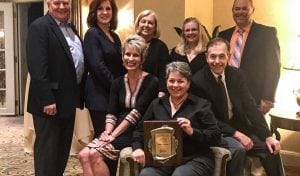Guest column by Curtis Condon, editor of Ruralite magazine in Hillsboro, Oregon
I’m old enough to remember when penny candy actually cost a penny. For a nickel, you could buy enough candy to rot your teeth out, as my mother used to say.
But what does a penny buy these days? Not much. The government can’t even make a penny for a penny anymore. According to the U.S. Mint, it now costs 1.5 cents to produce one.
About the only thing of value you can still get for a penny is electricity. You might call it “penny electricity.”
To make the math easier, let’s say the average rate for a kilowatt-hour of electricity is 10 cents. That is 60 minutes of 1,000 watts of electricity for a dime, so a penny of electricity equates to 100 watts. It’s enough to power a 9-watt LED lightbulb for 11 hours, all for only a penny.
Where else can you get that kind of value? Gas prices have come down from their stratospheric levels of several years ago, but there is still no comparison to the value of electricity. For example, if a gallon of gas costs $2.50, and your car gets 25 miles to the gallon, you can drive 176 yards — about two blocks — on a penny’s worth of gas.
I will take 11 hours of lighting for a penny over a two-block drive any day.
The value is just as evident when powering things other than lighting. Take, for instance, your smartphone. Using the same 10 cents per kWh price, penny electricity allows you to fully charge your iPhone more than 18 times for a penny. You can charge it once every day of the year for about 20 cents total.
Not impressed? Well, how about these other examples of what you can do with just a penny’s worth of electricity: power a 1,000-watt microwave on high for six minutes, run a 200-watt desktop computer for 30 minutes or watch 2.5 hours of your favorite shows on a 40-watt, 32-inch, LED television.
We are fortunate that electricity is such an excellent value because we have a huge appetite for it. We use it for so many different things: lighting, heating, cooking, cooling, refrigeration, cleaning, washing, pumping, entertainment, communications — even transportation.
Few corners of our lives are left untouched by electricity. Unfortunately, we don’t always appreciate it. When our monthly electric bill comes, we open it and may complain about the cost. It’s a knee-jerk reaction ingrained in us as consumers. We don’t stop to think about the value we received for the money.
Early in my career, I had the pleasure to interview an elderly woman who vividly remembered the day electricity came to her farm. Her name escapes me, but I do remember she proudly showed me the worn, dog-eared membership certificate the co-op issued to her husband.
“You young people will never know what it was like to have electricity for the very first time,” she said. “It was glorious. Nowadays, you take it for granted.”
Her farm was energized in 1940. She said the price of electricity at the time was slightly less than a penny a kilowatt-hour — true penny electricity.
A lot has changed since then. Wages and the cost of living today are a far cry from 1940 when the average annual wage was less than $150 a month and the average cost of a house was $3,920.
But one thing that hasn’t changed is the value of electricity. In 77 years, its price has risen much slower than the rate of inflation. A penny in 1940 had as much buying power as 17 cents today, which means the residential price of electricity is actually a better deal today than it was in 1940.
So to my way of thinking, the value of electricity is like the bygone days of penny candy, and it’s OK to indulge a little. But, unlike penny candy, penny electricity won’t rot your teeth out.



